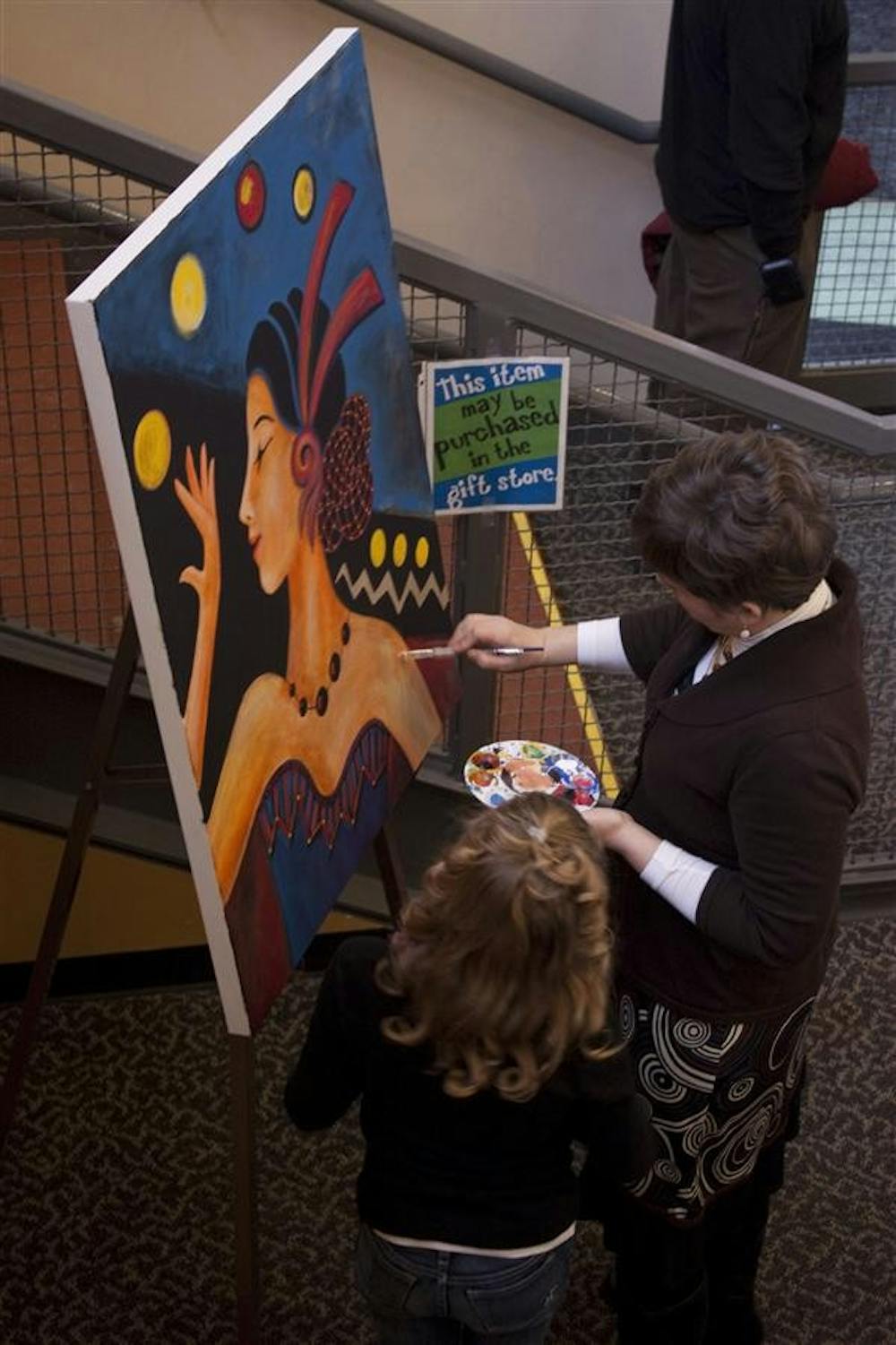For Bloomington resident Jim DeWees and his 8-year-old son Cameron, WonderLab is a place to play and learn.
Last Saturday, a special series of exhibits started at WonderLab with kids playing with clay, glue, a few thousand corks and a thirst for learning about the colors they see every day.
Throughout February, the WonderLab Museum of Health, Science and Technology is hosting a special series of exhibits about the science that goes into colors and the art that results from them.
“The Art and Science of Color” uses WonderLab’s signature style of making learning a game. Volunteer artists teach the children about different things they can do with color and how visible light works.
One of the two main features this past Saturday was the Community Pixel Mural, hosted by artist and molecular geneticist Martina Celerin.
The children took 3,500 colored corks donated from Oliver Winery and glued them onto a picture of a large butterfly. The many colored dots showed the children how pixels work, that many dots of different colors mixed together appear as one color.
“Having people work together to create art brings out a bigger appreciation of what it takes for one to create art,” Celerin said. “They now have a increased investment.”
When the butterfly is completed by the kids, it will be hung outside WonderLab so it can be seen on the B-Line Trail to teach the entire town about the wonders of pixels.
The second resident artist of the day, Juliana Burrell, taught WonderLab visitors about mixing specific colors. Burrell, an elementary school art teacher, is also an artist in her own right, and a few of her works were on display.
In her first WonderLab exhibit, she used red, blue and yellow modeling clay, an exercise Burrell uses in her own art classes.
“The kids really love using the model magic clay,” Burrell said. “It teaches them about mixing colors and how they can create the colors from the three primary colors.”
Burrell gave the kids pieces of clay and told them to mix and match to create secondary colors without using paint. The kids used their colors to fashion sculptures.
As Cameron DeWees ran from a music exhibit into a room dedicated to the science of bubbles, his father said he brings his son to WonderLab often.
“I bring him here a lot because it’s educational and enjoyable,” DeWees said. “There are very few places you can let them run around and enjoy themselves.”
Colors are science at WonderLab

Get stories like this in your inbox
Subscribe





